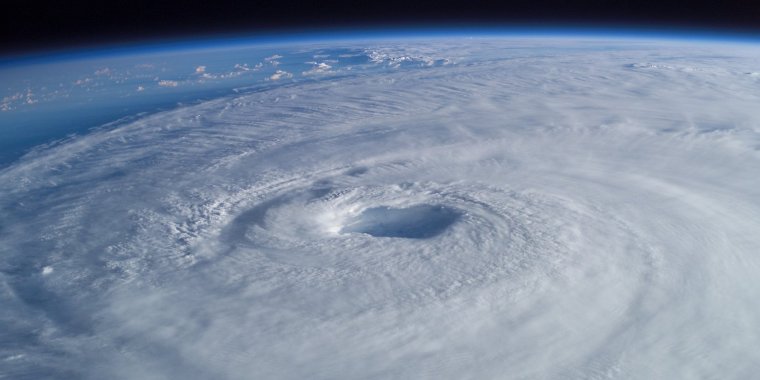| News / Science News |
Rising CO2 Levels Could Be Leading to More Destructive Hurricanes
Scientists are warning that an increase in global warming could significantly slow down hurricanes, potentially leading to more destruction.

Hurricane Isabel, seen from the International Space Station. Photo: NASA
While slowing down might sound like a good thing, the researchers are talking about the speed hurricanes progress, not wind speed. So this slow down means more time to carve out a trail of destruction with both wind and rain when they hit land.
The stark warning is based on meteorological data collected since 1950, as well as readings taken on more recent storms from the last few years, and forward projections created by computer modelling.
Here the scientists are studying the 'translational' or forward motion of hurricanes, rather than the eye of the storm wind speeds. Because no matter how fast wind speeds are, the storm can still be slow moving.
For example, in 2019, Hurricane Dorian produced gusts of 295 kilometres (183 miles) miles per hour, but advanced at just a handful of kilometres an hour.
That meant more time to batter properties and people, and to ditch more rainfall across a smaller place. If future hurricanes continue to follow the Hurricane Dorian pattern, then they're likely to be just as destructive, or even more so.
"Our simulations suggest that future anthropogenic warming could lead to a significant slowing of hurricane motion, particularly in some populated mid-latitude regions," says climatologist Gan Zhang, from Princeton University.
"This is the first study we are aware of that combines physical interpretation and robust modeling evidence to show that future anthropogenic warming could lead to a significant slowing of hurricane motion."
Using detailed climate models, Zhang and his colleagues ran six distinct patterns, based on 15 separate sets of initial conditions, which gave them a total of 90 different possible future scenarios.
In all of those 90 scenarios, the model was told to expect an increase in CO2 levels and subsequent global warming of 4 degrees Celsius (7.2 degrees Fahrenheit) by the end of the century.
That would cause the strong mid-latitude wind currents known as the westerlies to push further towards the poles, the simulations showed, leaving calmer conditions behind and less forward momentum for hurricanes.
Hurricanes in Asia and North America, along the latitudes close to New York, would be most affected, the models suggest. Hurricane speeds in the tropics would not be altered by the rise in temperatures, however.
The study was unable to find a definitive link between climate change brought on by human activity and the recent slowdown in hurricane patterns: at the moment, there isn't enough data to rule out random variations or some local cause, the researchers say.
But it's another clear indicator of the problems that we're bringing upon ourselves by leaving climate change unchecked. We're already seeing an increase in extreme weather events, and having them linger for longer is going to mean more bad news ahead. (Tasnim News Agency)
YOU MAY ALSO LIKE





